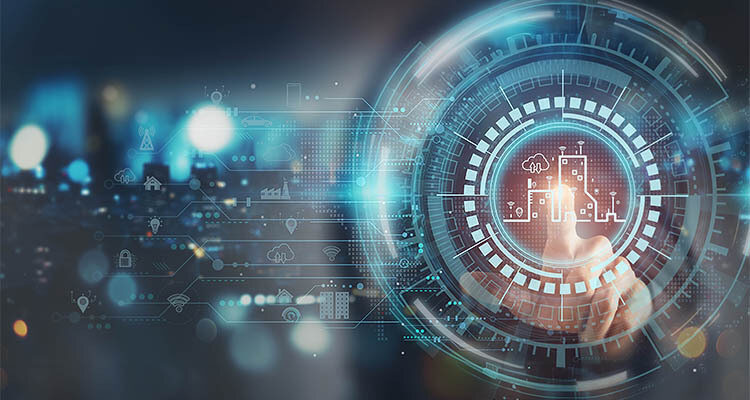
When it comes to sustainable and resilient infrastructure, Lori Hufford highlights that digital twins are the sharpest tools in the shed
A quick glance at any newspaper around the world will reveal stories of drought, excessive temperatures, water shortages, extreme flooding, storms, fires, and all sorts of climate-related catastrophes.
As communities, businesses, and governments cope with these events, we need to acknowledge the infrastructure that we build plays a big part in addressing our relationship with our planet. Infrastructure provides economic and social advancements in communities, but it has historically driven carbon emissions and other unwanted environmental impacts. By advancing how infrastructure is designed, built, and operated, we can aspire to meet both our economic and sustainability goals as we future-proof our physical environment from climate change.
Today, immersive technology, as a precursor to the metaverse, lets software developers create virtual, interactive worlds for any kind of purpose in any kind of setting. We can use this technology to make our infrastructure more sustainable and resilient in the real world.
Case in point, the infrastructure digital twin.
An infrastructure digital twin is a 3D digital representation of something in the physical world that is continuously updated with real-time data, making the digital twin a “live” interactive digital representation of an object or system.

Whether a water pipe buried beneath a city street or a wind turbine three miles offshore, infrastructure digital twins incorporate model data from concept through to construction. They also gather data through devices connected to the Internet of Things (IoT), such as fixed or mobile sensors that capture detailed, engineering-rich information – including temperature fluctuations, wind speeds, and carbon emissions.
As the infrastructure engineering software company, Bentley Systems is advancing infrastructure digital twins. By pairing infrastructure digital twins with advanced visualization and simulation technology, such as Epic Games’ Unreal Engine that powers the ever-popular online interactive game, Fortnite, as well as leading platforms from NVIDIA (Omniverse) and Unity, we can leverage that data into immersive virtual experiences to analyze the harmful effects of flash flooding, monitor pollution in cities, and even manage the health of trees in an urban landscape.
Who would have thought that designing, building, and operating infrastructure in interactive digital worlds could help us track carbon emissions and conserve resources to positively impact climate change?
Intelligent modeling
The key to harnessing the value for the planet related to infrastructure is a physically accurate digital twin complete with rich engineering data to model not only the built infrastructure, but also its surroundings. Imagine being able to model the real world that is affected by climate change and then generate rich metaverse experiences and simulations to find solutions. Whether it is capturing changing flood plains and ocean level rise in the natural world or analyzing the resiliency of critical infrastructure like an electrical grid, infrastructure digital twins hold the key.
However, a point in time view is not enough. By recording and modeling processes in our built and natural environments, and tracking those changes over time, we can use infrastructure digital twins like a time machine to look at where we have been, where we are now, and where we are going. This is a powerful tool to assess, change, and even reverse our carbon footprint.
Technology is only of value if it is usable and accessible. Digital twin technology, with the evolving metaverse, provides accessibility across any platform to match the desired experience – web, desktop, mobile, or mixed reality. These advances reach beyond the gaming community to infrastructure designers and engineers, project managers, and other stakeholders who want to visualize and model the sustainability of their project. Engineers can use real-time data and artificial intelligence to take us on a simulated journey into the future and see the outcomes that affect our carbon footprint.
Future-proofing infrastructure
Combating climate change is a global effort, and any organization trying to meet sustainable development goals needs the right tools to get there. This technology can be democratized for any project size, scope, or complexity, regardless of where in the world the project is located. The economic and environmental benefits of using digital twins for infrastructure have no boundaries.
According to the Center for Strategic & International Studies, clean water infrastructure is considered “a critical aspect of the water agenda” set by the G7 Build Back Better World Partnership (B3W), and digital twin technology is poised to take on the challenges of water scarcity and sanitation on a global scale.
At the National Oceanic and Atmospheric Administration, National Climatic Data Center scientists use historical rainfall data from digital twins to virtually test the operation of existing stormwater systems. They can then forecast data to model the impact of a major storm event and see the impact that it would have on any present or future stormwater infrastructure designs. Water infrastructure projects mapped with digital twins are addressing outdated stormwater systems that are buckling under the stress of heavier rainfall and increased flooding caused by climate change.
Achieving a zero-emissions future could also be possible with the help of infrastructure digital twins. Scientists and engineers are working virtually using infrastructure digital twins to create a carbon-free energy experiment, with 35 countries collaborating to build the world’s largest tokamak—a magnetic fusion device intended to prove the feasibility of nuclear fusion. The International Thermonuclear Experimental Reactor (ITER) project, based in southern France, expects the experiment to generate 500 megawatts of energy to power up to 200,000 homes, if successful. The implications of this potential, unlimited source of clean energy would have an unprecedented impact on sustainable development goals.
As the needs of our world continue to grow and change in size and scope, digital twins are essential for future-proofing infrastructure and driving climate action with sustainable designs that cut carbon emissions and eliminate waste.
Infrastructure digital twins are not futuristic. As fundamental building blocks of the infrastructure metaverse, they allow groups to interact and collaborate in new ways to help solve problems today for a more sustainable and resilient tomorrow.
For the list of sources used in this article, please contact the Editor.
Lori currently leads Bentley’s Engineering Collaboration organization and is focused on advancing infrastructure design using digital twins. Prior to this role, she led Bentley’s modeling and visualization team and various digital transformation initiatives across Bentley solutions. Lori has a diverse technology background with 25 years of industry experience across both enterprise organizations and startups. Lori earned a bachelor’s degree in electrical engineering from The Ohio State University, and a master’s degree in electrical engineering and computer science from the Massachusetts Institute of Technology.